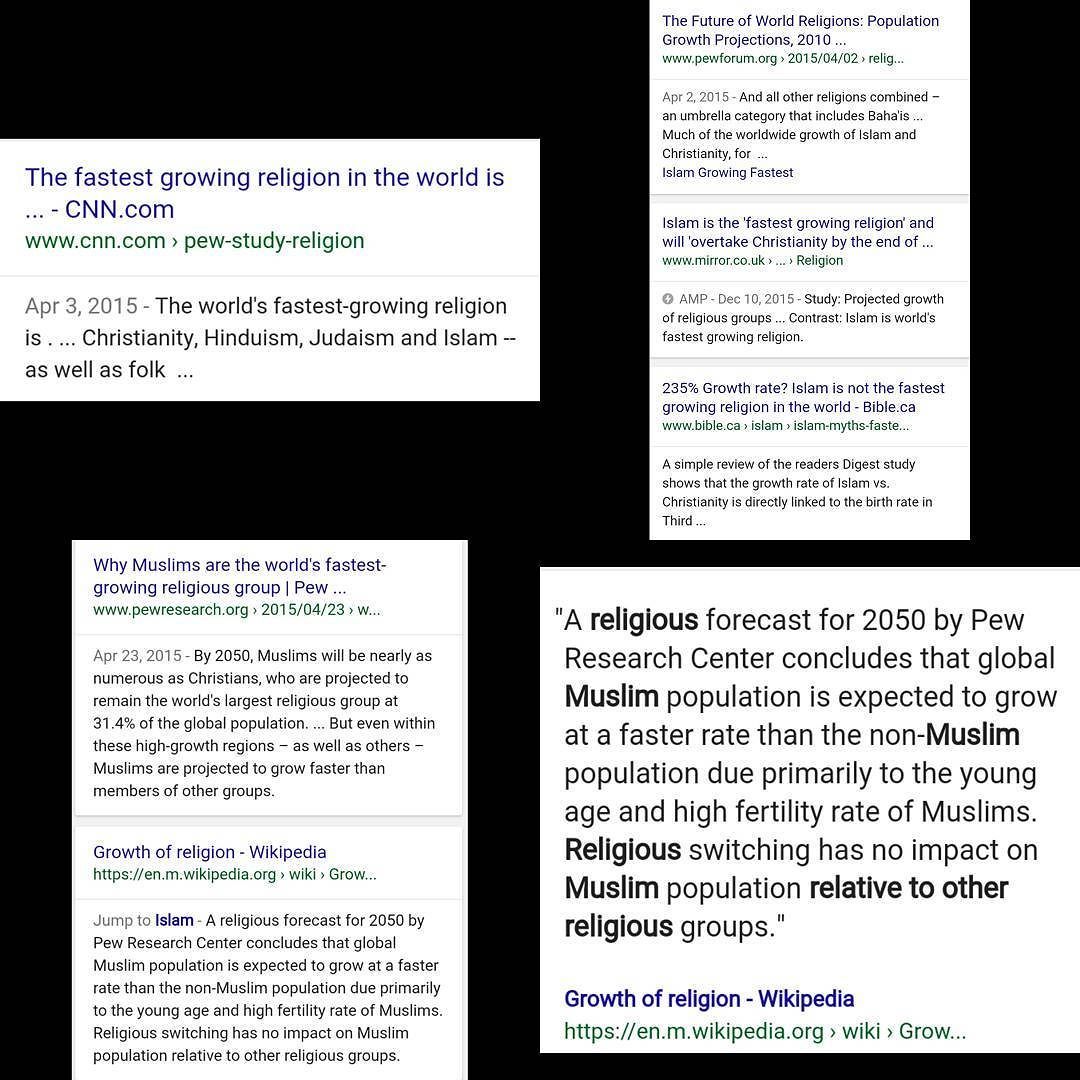Understanding the Fastest Growing Religion: Global Trends, Drivers, and Insights
Introduction: Global Shifts in Religious Affiliation
Religious affiliation continues to transform societies, influence cultures, and reshape demographic landscapes around the world. Rapid changes in population, migration, and generational trends are altering the balance of faith communities. Understanding which religion is growing the fastest and why can provide critical insights for educators, policymakers, community leaders, and anyone interested in global trends.
The Fastest Growing Religion: Recent Findings
According to the latest Pew Research Center report , Islam is currently the fastest-growing religion worldwide . From 2010 to 2020, the global Muslim population increased by approximately 347 million people , reaching nearly 2.0 billion adherents. This growth outpaced all other religious groups, with Christianity following as the second-fastest growing religion in the same period, adding 122 million followers [1] [2] .
In contrast, people identifying as religiously unaffiliated (“nones”) also saw a significant rise, growing by 270 million to a total of 1.9 billion globally. However, when measured by proportional and absolute growth, Islam leads all other groups. These figures are based on analysis covering 201 countries and over 100,000 individuals, representing 99.98% of the world’s population.
Key Drivers Behind Rapid Religious Growth
Several factors contribute to the swift expansion of particular religions:

Source: hiconsumption.com
- High Birth Rates: The primary driver for Islam’s growth is the high birth rate among Muslim families, especially in regions such as Sub-Saharan Africa, the Middle East, and parts of Asia. Younger populations and higher fertility rates significantly boost numbers over each generation [2] .
- Demographic Structure: Muslim populations are generally younger on average compared to other major religious groups, leading to more births relative to deaths each year [1] .
- Migration and Mobility: Migration, both voluntary and forced, can introduce religious communities into new regions, accelerating local growth rates and fostering diverse faith environments. European countries, for example, have seen notable increases in Muslim populations due to immigration [3] .
- Retention and Disaffiliation: While Islam and Hinduism have high retention rates, Christianity and Buddhism face greater challenges with religious disaffiliation, especially in Western nations. This affects overall growth rates for each group.
Comparing Major Religions: Growth and Context
Though Islam is currently growing the fastest, other religions also experience notable changes:
- Christianity: Remains the world’s largest religion with 2.3 billion followers as of 2020. Growth continues, particularly in Africa and parts of Asia, but is offset by disaffiliation trends in Europe and North America. Christianity grew by 122 million during the last decade [1] .
- Nones: The religiously unaffiliated now represent the third-largest cohort globally. This group is expanding, especially in developed countries, due to secularization and generational change [4] .
- Hinduism: Holds steady as the fourth-largest religion, with roughly 1 billion followers. Growth is mainly attributed to population increases in India and Nepal.
- Buddhism: Has seen a decline in absolute numbers over the last decade, shrinking by 19 million to 324 million adherents [1] .
How to Access Reliable Religious Demographic Data
If you are seeking up-to-date and trustworthy data on religious growth patterns, consider these practical steps:
- Visit the official Pew Research Center website and search for “Global Religious Landscape” or “Religious Growth” to access full reports, charts, and interactive maps. Pew is a nonpartisan source widely cited for its methodological rigor.
- Check academic publications and demographic yearbooks published by recognized organizations such as the United Nations or national statistics bureaus. These often feature annual updates on population and religious affiliation trends.
- Universities and global think tanks may publish regional or thematic studies on religious change. Searching academic databases with terms like “religion demographic trends” or “growth of Islam” can yield peer-reviewed articles.
- For case-specific inquiries, contacting religious studies departments at major universities can provide guidance on accessing further statistical resources or expert commentary.
Practical Implications and Considerations
Understanding the fastest-growing religions has wide-ranging implications:

Source: slashgear.com
- Community Planning: Local governments and service providers use such data to anticipate the needs of growing religious communities, plan for places of worship, and develop inclusive policies.
- Business Strategy: Companies operating internationally often tailor products, marketing, and services to reflect demographic realities. Religious holidays, dietary laws, and cultural customs may guide business decisions.
- Educational Programming: Schools and universities integrate knowledge of changing religious landscapes into curricula, fostering cultural competence and global awareness among students.
Challenges in Measuring Religious Growth
Collecting accurate data on religious affiliation is complex. Self-reporting, government policies, and varying definitions of religious identity affect results. In some regions, census questions about religion may be sensitive, leading to underreporting or misclassification. Migration, conversion, and the rise of unaffiliated individuals add further complexity. For these reasons, most reputable studies use multiple sources and apply careful statistical modeling to reach their conclusions.
Alternative Perspectives and Future Trends
While Islam’s current growth leads globally, projections suggest that by 2050, the number of Muslims and Christians could be nearly equal if current trends continue. The religiously unaffiliated may also continue to rise, especially in developed economies. Smaller faiths such as Sikhism, the Baháʼà Faith, and various folk religions experience local growth and adaptation, contributing to an increasingly diverse global religious mosaic [5] .
Step-By-Step: How to Stay Informed About Global Religious Trends
- Identify reputable sources such as the Pew Research Center or your country’s national statistical office.
- Subscribe to news alerts or newsletters from academic or nonprofit organizations specializing in religion and demographics.
- Consult annual reports or databases for the most recent updates.
- For in-depth study, enroll in courses or webinars on religious studies or sociology of religion offered by accredited institutions.
- Engage with diverse communities locally to gain firsthand understanding of demographic and cultural shifts.
Summary of Key Takeaways
The Muslim population is currently the fastest-growing religious group worldwide, driven mainly by high birth rates and a youthful demographic profile. Christianity continues to expand but at a slower rate, while the religiously unaffiliated are also increasing, especially in developed countries. Accessing reliable information involves consulting reputable research organizations, academic publications, and official demographic reports. Understanding these trends is crucial for informed decision-making in community planning, business, and education.
References
- [1] Pew Research Center (2025). Islam was the world’s fastest-growing religion from 2010 to 2020.
- [2] IRIC (2025). Islam is the fastest growing religion in the world, new study shows.
- [3] Wikipedia (2024). Growth of religion.
- [4] NDTV (2025). Islam Fastest-Growing In World, Christianity 2nd, ‘Nones’ 3rd Largest.
- [5] Only By Land (2024). 7 Fastest Growing Religions You Need to Know in 2025.
MORE FROM cheerdeal.com













